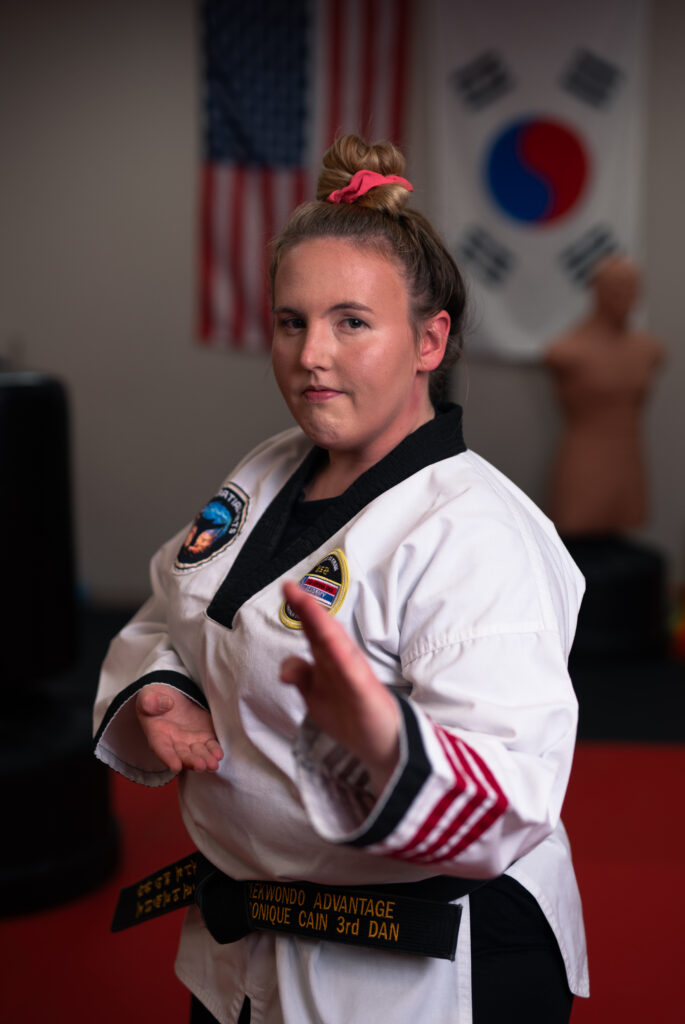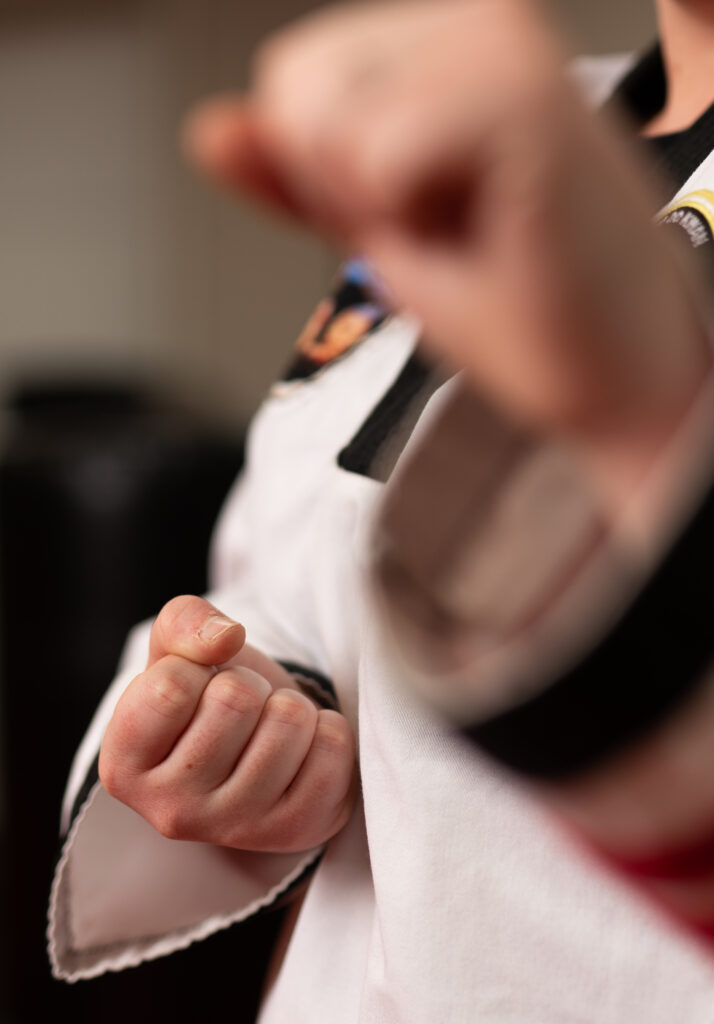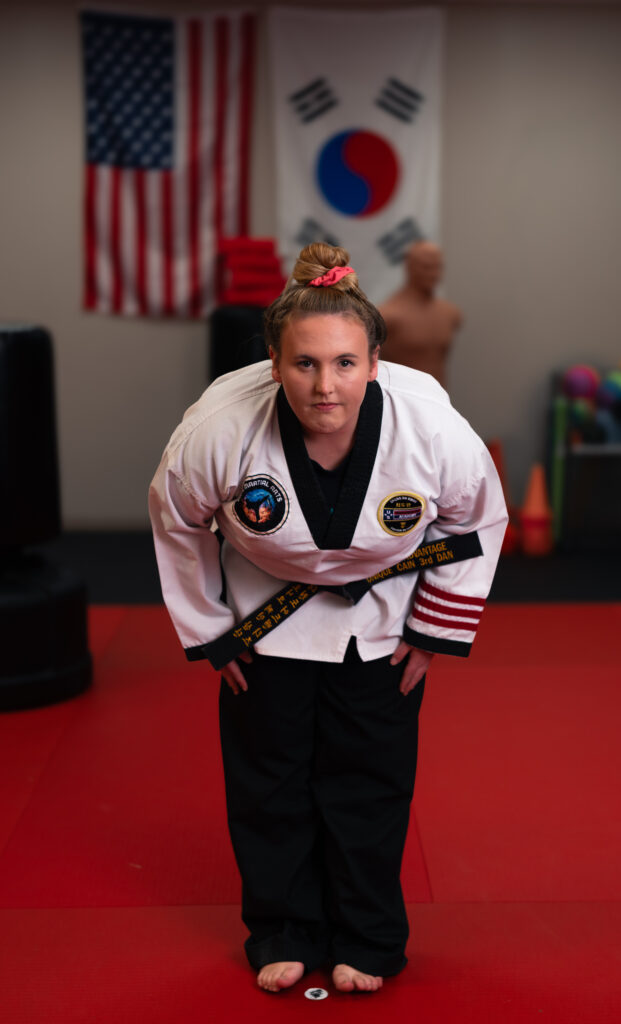By Karey Schaitel
When Veronique Bayer was 8 years old, she begged her parents to take her to the martial arts studio near their house. Her dad agreed to take her to taekwondo classes if she agreed not to quit until she received her black belt.
“Eight-year-old me did not really understand what I was signing up for,” Bayer says. “There were some times I wanted to quit, but [my dad] held me to that agreement.”
Bayer got her first-degree black belt at age 13 years old, took a break, got her second-degree black belt at 16 years old, took another break, and then ended up getting her third-degree black belt by 19 years old. After initially saying she was finished with martial arts, she had the “crazy idea” of opening a martial arts school. Now, as co-owner of Cape Martial Arts in Cape Girardeau, Bayer says she has developed a “passion for martial arts that stems from the fact that literally anyone can [participate].”
Bayer says martial arts has been a rewarding experience for her personally, and the feelings of the practice can range from challenging to exhilarating and all of the emotions in between. She says participating in martial arts has helped boost her confidence and helped her become more self-aware, patient and understanding.
Although Bayer studied traditional martial arts, she wanted her martial arts school to focus on the present developmental needs of the students.
“Martial arts … is not a team-based activity, so your success is really just up to you for the most part, and you can be someone who takes it very seriously and trains very hard, and you can go very far with it,” Bayer says. “You can also be someone who is naturally born with more challenges, whether that be physically and/or more mentally, and this is still an activity that you can partake in and excel in.”
Bayer enjoys using the versatility of martial arts to provide people of all ages and abilities with an opportunity to thrive, including students on the autism spectrum. She works to adapt the training for students with physical limitations.
“A lot of times, children that have been diagnosed with autism, depending on how many challenges they face with autism … may not be eligible to play softball, baseball or football … those main streamline sports,” Bayer says. “With martial arts, there’s no challenge there.”
Working with students with disabilities has been rewarding to Bayer.
“This has been the most rewarding aspect of my life up to this point,” Bayer says. “I tell the kids and students, ‘Every day you come here for me to teach you things, but I swear, I feel like I learn more from you than what you will ever learn from me.’”
Bayer stresses simplicity when it comes to employing martial arts moves in real scenarios. If a situation becomes physical, she says there is approximately three seconds in the moment to complete up to three moves. Bayer says it is important to pick the move that is the most “time-effective thing you can do,” which will often be the move or moves comprised of muscle memory; regular practice can develop accurate muscle memory. She encourages students to “always master the basics first.” Learning the soft and hard spots of the body first can go a long way to know where to strike in the moment.
Self-defense tips from Veronique Bayer
1. Be self-aware.
“The biggest self-defense tip you can ever learn is to be more self-aware,” Bayer says. “It’s important to learn to gauge what situations you are putting yourself into. You should probably trust your intuition that tells you something is not right.”
2. Avoid problem situations.
“If you can avoid altercations, it is often easier to avoid them,” Bayer says. “You don’t know how far the situation may escalate, so it’s often better just to get out of there.”
3. Use verbal de-escalation tactics.
“It’s wise to learn how to choose your words carefully,” Bayer says. “If you can choose your verbiage carefully, there’s a good chance the [situation] just ends in a verbal altercation versus ever escalating to a physical altercation.”
4. You have the right to defend yourself.
“Do what you’re most comfortable with … if you can carry pepper spray or you can carry those high-pitched safety alarms … I [suggest] carrying it on you at all times,” Bayer says.
5. Learn how to throw a proper punch.
The hard parts of the body include your palm, fist, elbows and knees. “Those are the parts of your body you want to strike with,” Bayer says.




